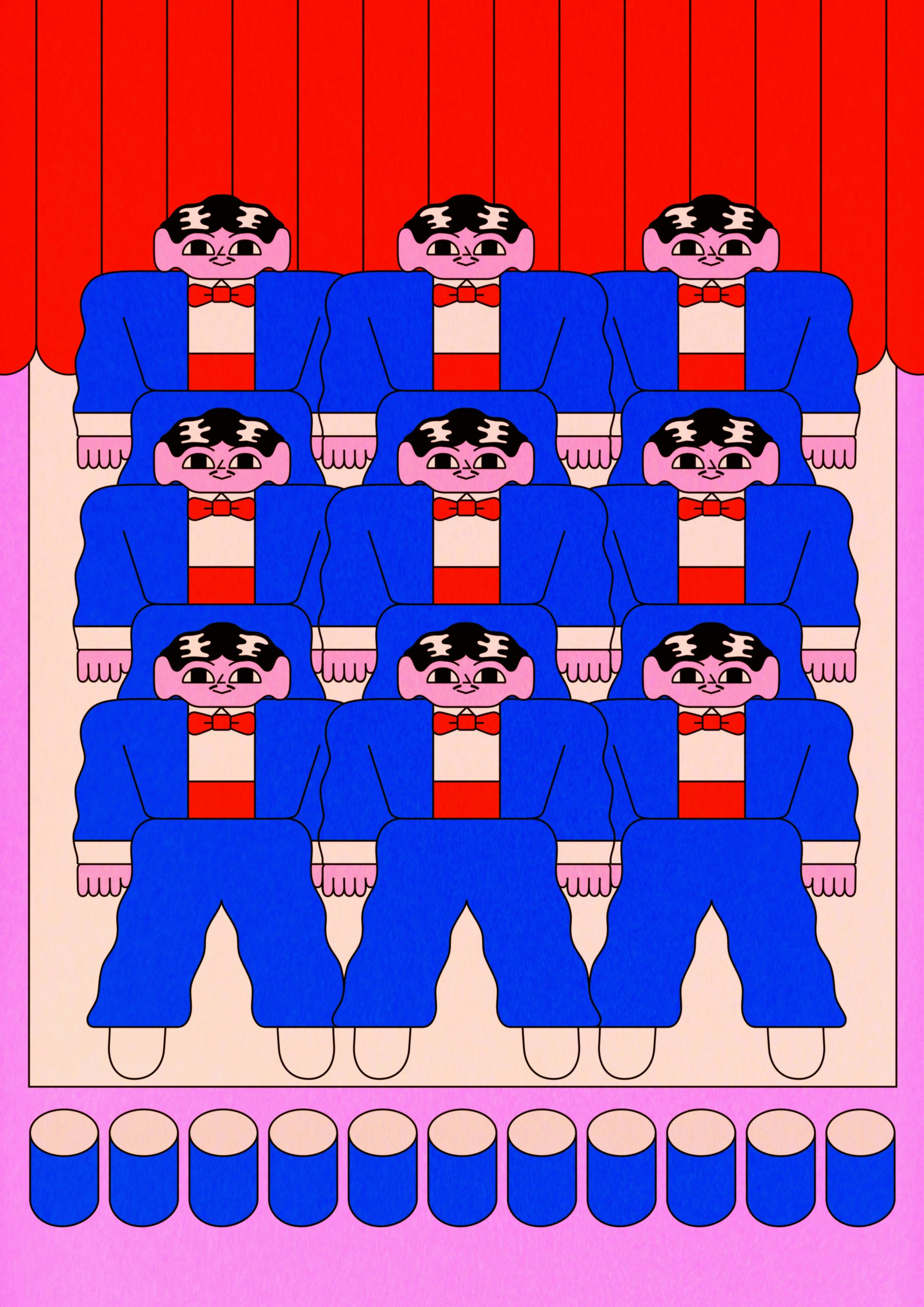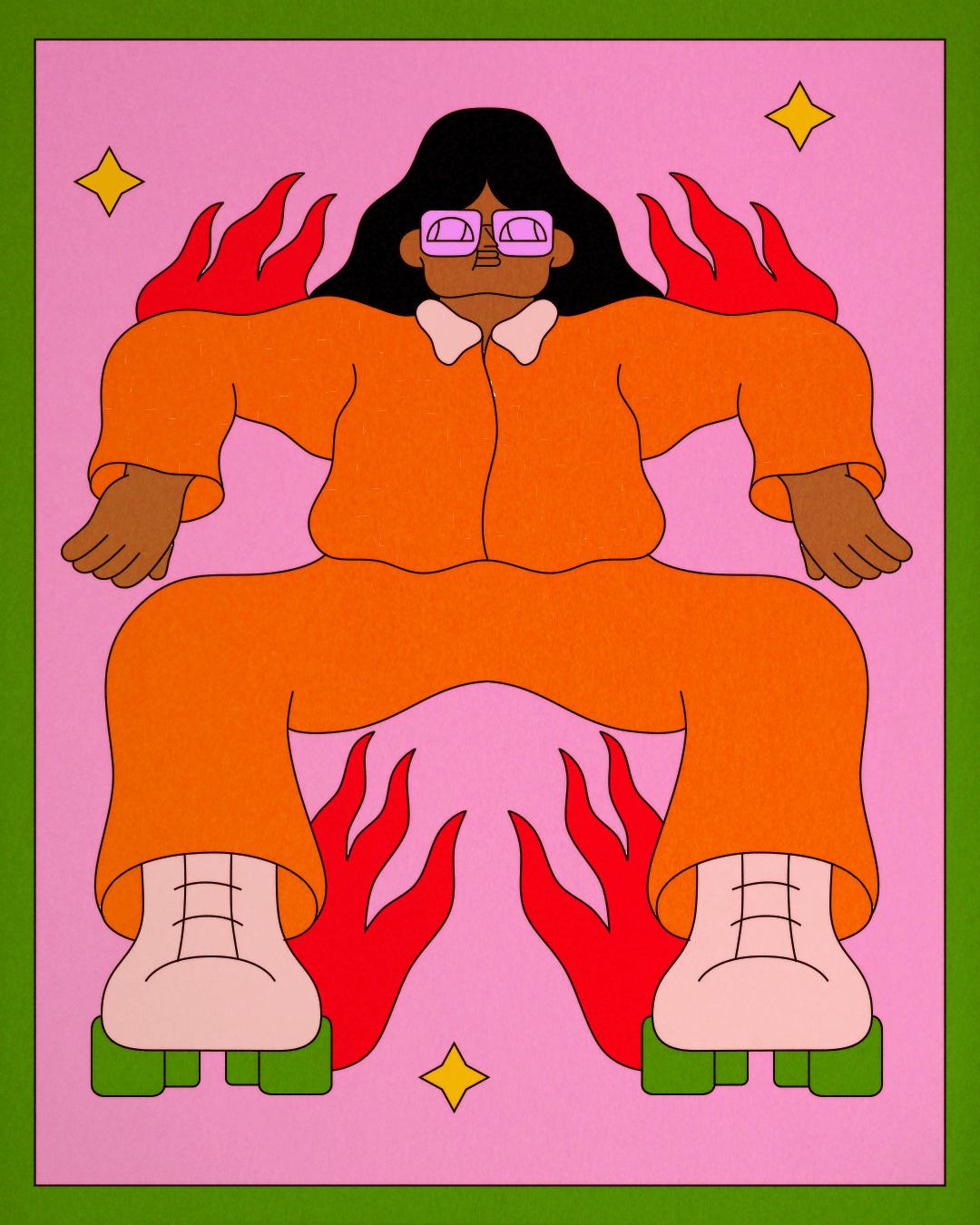Thomas Bryson-King on finding his feet
The Bristol-born animator and illustrator, who is part of our New Talent 2024 showcase, shares how getting signed by an agency and moving to the other side of the world have helped him finally feel settled in his practice
One of Thomas Bryson-King’s earliest memories is a vivid recollection of his dad showing him how to draw stick people. “I can remember drawing faces with arms and legs sticking out of them and my dad saying, ‘You have to draw the arms and legs coming out of the body, not just the head,’” he tells CR. Pencil drawing is something that the animator and illustrator, who primarily works digitally, comes back to even now. “It settles my mind a bit, because my thoughts zigzag all around.”
Better known by his moniker Everyone’s Favourite, over the last few years Bryson-King has built up an eclectic client list ranging from cereal brand Lucky Charms to Cartoon Network channel Adult Swim. Drawing on nostalgia and surrealism, his work typically consists of psychedelic worlds populated with an array of eccentric characters. “I like to make happy stuff, but something that’s a bit extra to reality or heightened,” he explains.
While he was always creatively inclined, he didn’t have a specific career in mind while growing up. “I just knew I enjoyed making stuff. Even before uni, when I was working in call centres and stuff like that, I would always be on Microsoft Paint making little things,” he says. “The career has grown around the hobby. It’s a sort of organic process that was never really planned.”
He chose his foundation in Digital Media Design at the University of Brighton, for example, after one of his friends, who was already doing the course, suggested he should join as well. The course, which spanned everything from web design to photography, subsequently led him to a BA in animation at the University of Westminster, after his tutor noted that every project he was submitting happened to be animation-focused.
While there wasn’t a huge amount of professional practice taught during his degree (“I took an animation lightbox and animation paper to my first job at a digital ad agency!”), Bryson-King eventually secured his first proper job at Seed Animation, which was a huge learning curve for him. After a couple of years at the studio, he decided it was time to make the switch from more generalist 2D animation to becoming an artist in his own right.

He’s now been freelancing for a number of years, though he admits it has taken a long time for his practice to gain a real sense of direction. “I did loads of lyric videos for big artists back in the day, but I don’t really publish any of that stuff online. Those major record labels, they generally just want churned-out, generic, kinetic text animations with loads of splashes of colour.”
It wasn’t until 2022 that the animator finally felt like his style was beginning to resonate with people, and he started getting commissions in that were more closely aligned to his interests. Around the same time, he also got signed by Snyder for representation in the UK and US. “That style was just getting rolling and then Snyder came in, so they were two separate things that happened at the same time and then both caused each other to accelerate. And my career is now making the illustrations and animations I want to make, as opposed to having to do general stuff,” he says.
I realised it’s better to have lots and lots of things you have published that you feel could maybe be better than this completely unfinished masterpiece that no one will ever see
Moving from London to Sydney, where his wife is originally from, has also been hugely positive for him in both a personal and professional sense. “I’m definitely in the stage of my life now where nature is becoming more important than pubs, so I’m quite happy here for the time being,” he says. “I think something about being in a relaxed environment with lots of nature and near the sea has put a lot more of that natural focus into my work and calmed it down a little bit. Not so much crazy people running round anymore, it’s more meditative in a way.”
When it comes to commercial work, he says his favourite kind of commission is “anything with an open brief”. These have included an editorial project with fashion mag W that saw him create a series of animations for a piece on photographer Tyrell Hampton; cute animated loops for shoe brand Steve Madden’s Olympics campaign; and music videos for a range of indie artists, including one for Canadian band The Painters that formed part of a longer visual for every track on their album release, which was then screened at a cinema in Toronto.
“Music videos generally are what I like to do, because they’re just good exercises,” he says. “They don’t have very much money, but they have a totally open brief so you can use it as a springboard for your ideas, practise the things you want to get really good at, and inject them into more commercial work.”
Personal projects are also a vital part of Bryson-King’s practice; Everyone’s Favourite Shop sells everything from riso prints and keyrings to bumper stickers, while his Instagram is filled with individual pieces that transform observations on daily life into surrealist scenes. “I need time to do personal projects, otherwise everything seems to grind to a halt. You can experiment without being under time and pressure constraints, and you can create your own artistic visual identity through experimentation. That feeds straight into an improvement in your work commercially.”

While the animator prefers to be as prolific as possible when it comes to his output now, he acknowledges that it’s a skill he’s honed over the course of his career. “I spent a long time before my career really got going not finishing these big-picture ideas, and I realised it’s better to have lots and lots of things you have published that you feel could maybe be better than this completely unfinished masterpiece that no one will ever see.”
Having racked up over 8,000 followers on Instagram, he recognises that the platform has also played an important part in developing his practice but says he often feels conflicted about relying on it for exposure. “I’ve spoken to artists on Instagram about the fact that sometimes it feels like we all work for Instagram for free, but at the same time there are so many benefits. The amount of my personal projects that I have been sent in creative commercial briefs, where people say, ‘Can you make it like this?’ Having that level of personal projects and just putting stuff out there all the time, it does really help your career.”
While most of Bryson-King’s commercial work comes from the UK and US, he is keen to build up a client base in Australia and elsewhere. He also has big ambitions in terms of evolving his practice. “I think you can go with the flow too much, then you’ll just stagnate and if you’re not lucky you’ll be left behind,” he says.
Aside from having ambitions to go back through all his individual pieces with a view to one day connecting them in a “sprawling mega project”, he’s also increasingly eyeing up mediums that would allow his work to exist in the physical world. “It’s just something in the back of my mind – at some point you’ve got to start thinking about getting your hands on some clay or something. Take it to the next place, wherever that may be.”





